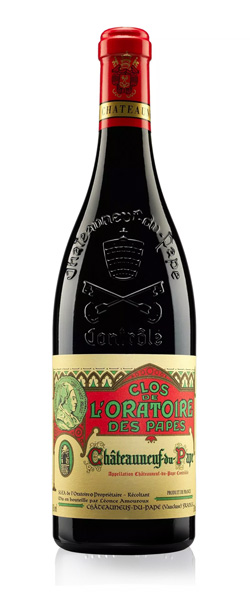Australian Shiraz Singapore known for its bold flavors, rich character, and exceptional quality, has become a staple in the wine culture of Singapore. Hailing from the diverse wine regions across Australia, Shiraz represents a quintessential wine style that has captivated enthusiasts worldwide. In this article, we will explore the working process of Australian Shiraz, from vine to glass, examining the grape variety, terroir, winemaking techniques, and the best ways to appreciate it in Singapore’s dynamic wine scene.
I. The Grape Variety – Shiraz:
Shiraz, known as Syrah in many other parts of the world, is the grape variety that forms the heart and soul of Australian red wine production. It is a versatile and adaptable grape that thrives in a range of climates and soils, resulting in a diverse spectrum of Shiraz wines produced across the Australian continent.
Shiraz grapes are characterized by their thick skins, which contribute to the wine’s deep color, pronounced tannins, and rich flavors. The grape variety typically exhibits notes of dark berries, black pepper, spice, and often a hint of eucalyptus or mint, which is influenced by Australia’s unique terroir.
II. Terroir in Australia:
Australia boasts an array of diverse wine regions, each with its unique terroir, climate, and geological characteristics that shape the flavors and characteristics of Australian Shiraz. Some of the prominent Shiraz-producing regions in Australia include:
-
Barossa Valley: Located in South Australia, Barossa Valley is renowned for its old vine Shiraz. The region’s warm climate and ancient soils result in bold, full-bodied Shiraz wines with rich fruit flavors and powerful tannins.
-
McLaren Vale: This coastal region in South Australia benefits from a Mediterranean climate. Shiraz from McLaren Vale often exhibits lush fruitiness, balanced acidity, and a touch of spice.
-
Clare Valley: Known for its cool climate, Clare Valley Shiraz offers a unique expression of the grape with bright red fruit flavors, elegant acidity, and fine-grained tannins.
-
Hunter Valley: Located in New South Wales, Hunter Valley Shiraz is characterized by its medium-bodied style, showcasing red fruit notes and a distinct earthy quality.
-
Heathcote: Situated in Victoria, Heathcote is known for producing concentrated and powerful Shiraz wines with dark fruit flavors and a notable mineral edge.
III. Winemaking Process:
The winemaking process plays a pivotal role in shaping the characteristics of Australian Shiraz. Here are the key steps involved:
-
Harvesting: Shiraz grapes are typically harvested when they reach optimal ripeness. Winemakers monitor sugar levels, acidity, and flavor development to determine the perfect moment to pick the grapes.
-
Crushing and Destemming: After harvest, the grapes are crushed and destemmed to separate the berries from the stems. This process can vary in intensity, affecting the wine’s tannin levels.
-
Fermentation: The crushed grapes are fermented, typically in stainless steel or oak fermenters. During fermentation, the grape sugars are converted into alcohol, and the grape skins impart color, tannins, and flavor to the wine.
-
Aging: Australian Shiraz wines are often aged in oak barrels, which can be new or used, depending on the winemaker’s preference. Oak aging contributes additional flavors, complexity, and structure to the wine.
-
Blending: In some cases, Shiraz may be blended with other grape varieties, such as Cabernet Sauvignon, to create a more complex and balanced wine.
-
Bottling: After aging, the wine is bottled and may undergo further bottle aging before release.
IV. Shiraz Styles:
Australian Shiraz comes in various styles, from bold and robust to more elegant and restrained. Some of the common styles include:
-
Full-Bodied Shiraz: These wines are rich, full-bodied, and often exhibit intense dark fruit flavors, prominent tannins, and a long finish. They are a hallmark of regions like Barossa Valley and Heathcote.
-
Cool-Climate Shiraz: Produced in cooler regions like Clare Valley and Yarra Valley, these Shiraz wines tend to be more restrained with bright red fruit flavors, fine tannins, and vibrant acidity.
-
Shiraz-Cabernet Blends: Blending Shiraz with Cabernet Sauvignon is a common practice in Australia, resulting in wines with added complexity, structure, and balance.
V. Savoring Australian Shiraz in Singapore:
Singapore’s diverse wine culture offers numerous ways to appreciate Australian Shiraz:
-
Wine Bars and Restaurants: Many wine bars and upscale restaurants in Singapore feature a curated selection of Australian Shiraz wines, offering an excellent opportunity to enjoy them alongside delectable cuisine.
-
Wine Retailers: Specialized wine shops and retailers in Singapore offer a wide range of Australian Shiraz wines, allowing enthusiasts to explore various styles and producers.
-
Wine Tasting Events: Keep an eye out for wine tasting events, masterclasses, and wine festivals that focus on Australian Shiraz, providing an opportunity to taste different expressions of this beloved varietal.
Conclusion:
Australian Shiraz Singapore with its diverse regional expressions and winemaking techniques, stands as a testament to the country’s winemaking prowess and innovation. Whether you seek a bold, full-bodied Shiraz or a more elegant, cool-climate expression, Australian Shiraz offers a world of flavors and styles to explore. As you raise a glass of Australian Shiraz in Singapore, you embark on a sensory journey through the sun-drenched vineyards and diverse terroirs of Australia, experiencing the unique character and craftsmanship that make this varietal a beloved choice among wine enthusiasts worldwide.

